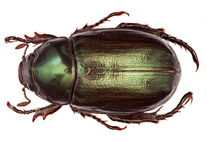Abstract
The Linxia Basin, Gansu Province, China, is known for its abundant and well-preserved fossils. Here a new species, Chleuastochoerus linxiaensis sp. nov., is described based on specimens collected from the upper Miocene deposits of the Linxia Basin, distinguishable from C. stehlini by the relatively long facial region, more anteromedial-posterolaterally compressed upper canine and more complicated cheek teeth. A cladistics analysis placed Chleuastochoerus in the subfamily Hyotheriinae, being one of the basal taxa of this subfamily. Chleuastochoerus linxiaensis and C. stehlini are considered to have diverged before MN 10. C. tuvensis from Russia represents a separate lineage of Chleuastochoerus, which may have a closer relationship to C. stehlini but bears more progressive P4/p4 and M3.

